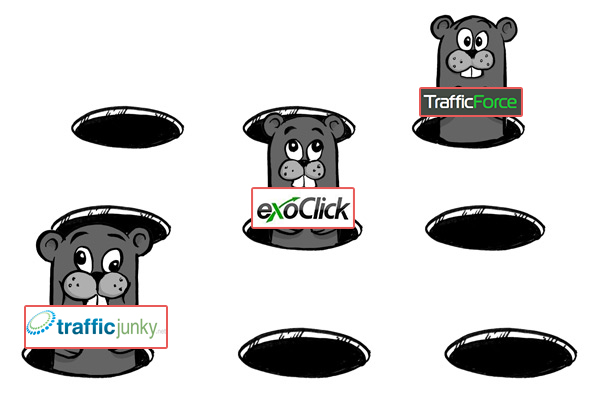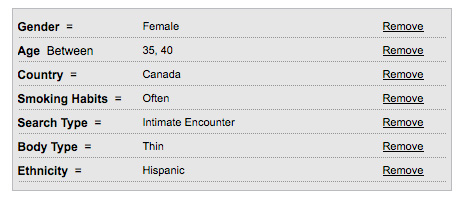The Scaling Fallacy: Life As An Affiliate Whack-a-Moler
Jack creates 10 campaigns in 10 countries on TrafficJunky:
Here are his morning stats:
Germany: +$45
France: +$10
Switzerland: -$5
Netherlands: +$20
United Kingdom: +$12
Australia: +$25
Canada: -$21
Belgium: +$42
Turkey: +$20
Sweden: -$10
JACK’S TOTAL PROFIT: $138
Bill creates 1 campaign in 1 country on TrafficJunky.
Germany: +$90
BILL’S TOTAL PROFIT: $90
Which affiliate would you rather be?
Come on, it’s a no-brainer.
Bill is in a much better position.
Let’s look at what each affiliate has to do in the morning:
Jack has to:
- Check stats for 10 different campaigns.
- Optimise creatives in 6 different languages.
- Search for the best offers in 10 different countries.
- Manage bids against hundreds of competitors.
- Put out fires all day before he can work on any new campaigns.
Bill has to:
- Check stats for 1 campaign.
- Optimise creatives in a single language.
- Track the best offer in a single geo.
- Manage bids against a handful of strong competitors, and many more weak, distracted competitors (like Jack).
- Find new sources to test his campaign.
Now imagine the two affiliates hear about an amazing new traffic source. We’ll call it Exoclick for the lols.
They both want to scale their campaigns to it.
Bill, having much more time on his hands, goes first.
He knows Germany inside out. He knows what works. Scaling is merely a case of busting open Voluum, tapping Duplicate, and changing the tokens:
His stats now look like this:
TrafficJunky
Germany: +$112
Exoclick
Germany: +$42
BILL’S TOTAL PROFIT: $154
Jack, on the other hand, is starting to sweat.
He can no longer make sense of his stats without spending 40 minutes staring at Excel.
He has 20 campaigns in 10 countries on 2 traffic sources.
And his stats look like this:
TrafficJunky
Germany: +$23
France: -$7
Switzerland: -$25
Netherlands: +$27
United Kingdom: +$3
Australia: -$14
Canada: -$28
Belgium: +$12
Turkey: +$25
Sweden: -$5
Exoclick
Germany: +$75
France: +$2
Switzerland: -$17
Netherlands: +$5
United Kingdom: -$88
Australia: +$20
Canada: +$10
Belgium: -$25
Turkey: +$13
Sweden: -$4
JACK’S TOTAL PROFIT: $2
Aw, shit.
Jack can only manage so many campaigns effectively.
Even then, it only takes one rogue offer (in this case, the UK) to wipe out his progress in the other markets.
Jack, like many affiliates, has chosen to stack the deck in somebody else’s favour. He needs everything to go right, or his model is inefficient.
Let me tell you:
In affiliate marketing, fucking rarely does something ever go right — let alone all of it.
Why is that?
Every market requires a complex understanding of conversion rates, clickthrough rates, and the dozens of metrics that wreak havoc on them. Even this may prove irrelevant if you fail to catch hot offers early on their upswing.
So how are you going to manage the above, MULTIPLIED BY TEN, when your attention is DIVIDED BY TEN? (Plus porn.)
There’s a pretty simple solution.
Look at what happens if Jack only runs campaigns in one country — Germany*.
The stats completely change.
His profits would be $98.
(And his ad spend considerably lower.)
*This is an example, not an endorsement for advertising in Germany.
The stats improve, but that is purely superficial. What we should really be interested in is what gives us the best chance of success and true ‘scaling’ going forward.
It’s the revitalising effect of removing so much deadwood that has the real impact.
Perhaps Jack’s morning to-do list would start to look more appealing.
No more staring glumly at the ‘Monday Headbanger’ with rows of campaigns disintegrating in puffs of smoke.
His blood pressure would drop, his sense of direction might return.
More of his working hours would be spent looking for opportunity rather than putting out fires day after day, every day, until there’s nothing left to save.
This is the price an affiliate pays for spreading himself too thin.
* * *
Volume is sacred in this industry.
It goes against instinct to start culling campaigns — especially those that are profitable — and it isn’t made any easier by the pines of your affiliate manager (“Revenue, revenue, revenue!”).
But remember: volume is irrelevant if it’s fractured across 20 offers in 10 countries.
You can’t leverage the sheer number of your campaigns. It’s your dominance in each individual market that counts.
On the flip side, achieving dominance in a single market is easier when you don’t have a desktop scattered with half-finished landing pages for every single nation in the EU.
Attacking a single country with brute force and finding something that works?
Now that is a scalable business plan.
Pussy-slapping 15 nations in to converting at a 10% ROI then screaming like a banshee as you realise Nation 16 lost the entire fucking lot with one dead offer?
Not so scalable, mon ami.
* * *
The lesson?
1. Spreading yourself too thin will cannibalise any profits you might have made.
2. Spreading yourself too thin will prevent you from scaling the campaigns that are actually worth scaling.
There is a balance, of course.
You do want to explore new markets. I can’t emphasise that enough.
Without exploring, you won’t find any profits period.
Newbie American affiliates who refuse to exit their home market are probably familiar with consistent big fat zeros. That’s because domestic arbitrage… is a bitch. There’s a long line of capitalist pigs that got to the table before you.
If you are going to flee in to foreign markets, any experiment should be carried out with a degree of control.
Foreign campaigns should be planned, not ripped with reckless abandon.
Do some calculations on the required CTR/CVR metrics before you even start.
(You’ll know if you’ve planned a campaign — you won’t have French translations in one tab, German in another, and a Turkey flag occupying Photoshop.)
You shouldn’t hesitate to scrap these campaigns if the profit achieved is barely worth a pot to piss in.
So you find a country somewhere close to the Russian border that produces a steady $10/profit per day.
Should you pursue it?
Should you fuck.
Maintaining a $10/day campaign is like pulling down your pants, cracking open your skull, and taking a hearty dump on the sacred membranes.
A complete waste of mental resources.
The only possible reason to focus on these campaigns is if you don’t have the capital to compete elsewhere.
And in that case, your objective should be to raze the marketplace, pillage whatever you can, then move on to richer pastures.
* * *
My advice:
(Yes, there is some here. Eventually. I put it at the end to confuse the undeserving bastards who didn’t make it this far.)
1. Pick a very small number of countries to operate it.
2. Ensure those countries have the same language so you can recycle creatives.
3. Kill any campaign that requires time to manage but can’t satisfy your income objectives — regardless of profitability.
4. Don’t scale at all until your existing campaigns have settled from peak ‘just-been-launched’ performance in to stable, reliable numbers. (Or you’ll be left with an empire of sand castles.)
5. Understand and respect the one metric that Voluum/CPVLab can’t calculate: opportunity cost.
Whatever you work on today, it comes at a price.



Thanks Finch, you always deliver quality. I have been struggling a lot with scaling and i am afraid it might…